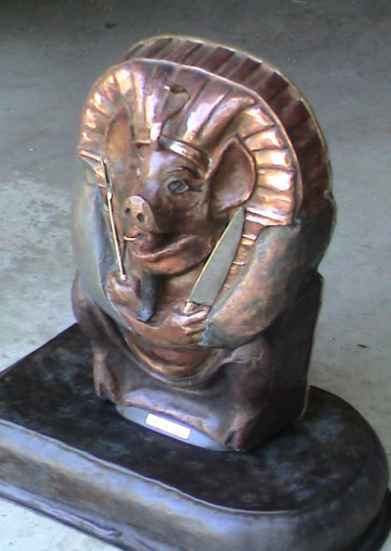
July 2006
- a raised copper vessel |

|
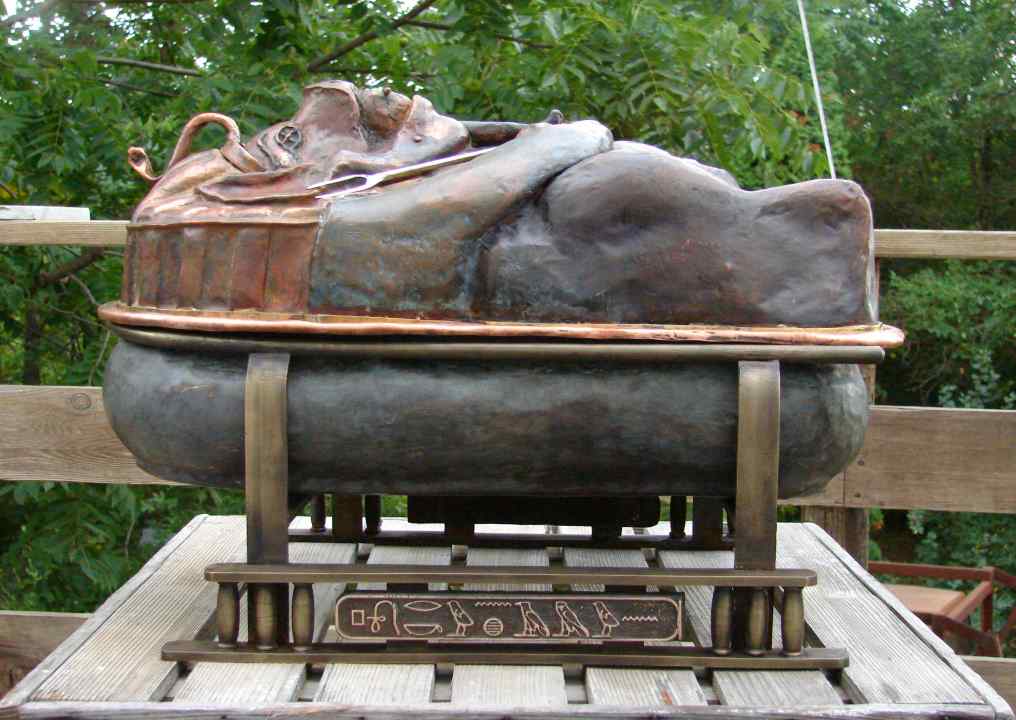
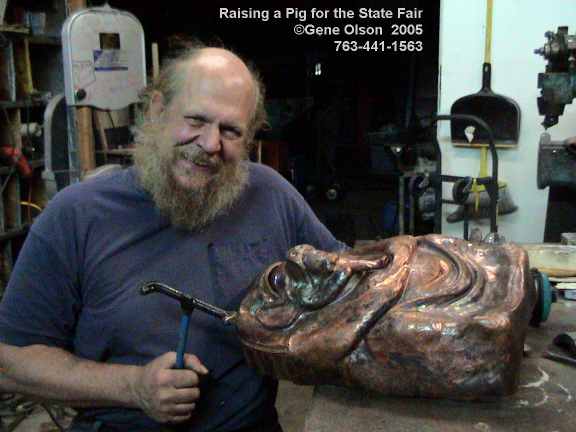
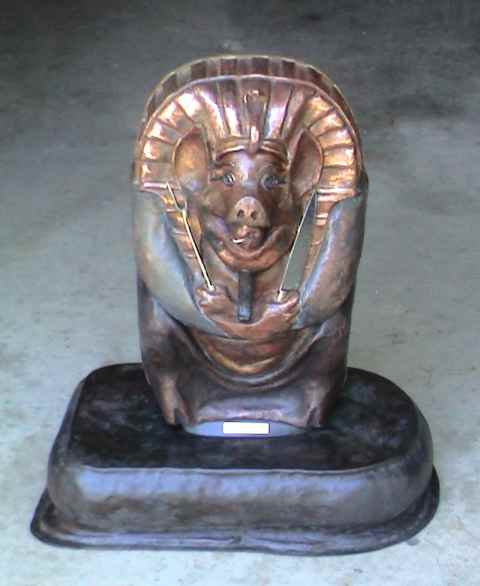
Intitial Thoughts on the project
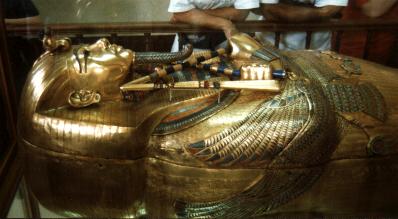
|
This is about a sculptural vessel that started with a whimsical thought about nature of the burial furniture. My friend Alex makes sculptural urns for pet ashes, and I realised that a pet pig might well end up in a pot instead, so I set about making a suitable vessel to carry this bbq'ed king to his next venue.
The pig is the guest of honor, the focus of adoration. I felt he needed some sort of recognition, a nod to his importance, like a medieval knight's stone coffin lid, but a sculpted relief in metal instead. With metal in mind, my thoughts soon shifted to Tut and his gold inner coffin (shown at left) and I was off and pounding.
I started drawing, piggy laid out with a knife and a fork. I wanted a nice fat pig and as I was working on an Egyptian motif, I recalled as statue I had seen of the Pharaoh Akhnauten (Tut's Dad) with his belly hanging out. (right) It was a perfect match, so I added that detail to the lower half of the lid. |
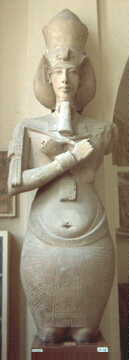
|
Concept Drawing
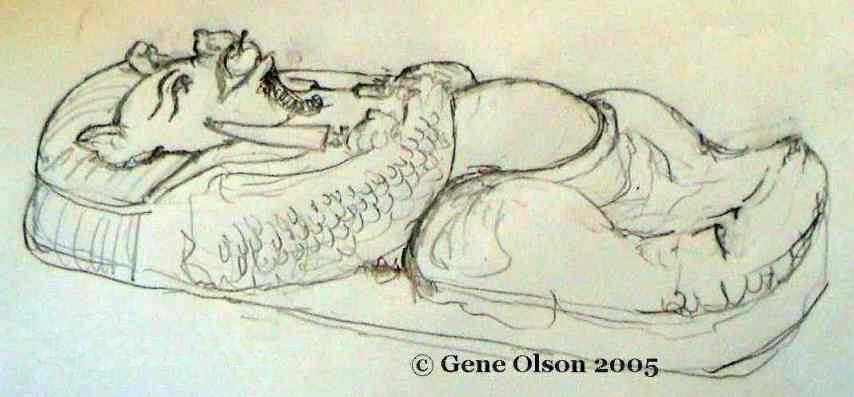
A rendering of the idea as a somewhat longer aspect, piece.
The Build |
||
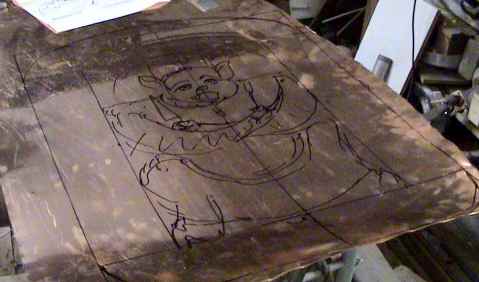
|
Gene combined ancient metalworking techniques with modern methods and materials
to produce this sculptural vessel.
The design was mentally unfolded and stretched to provide material where it would be needed as the drawing was transferred to the flat sheet.
|
|
|
The recessed areas were beaten down as the age old process of forming copper
began itís rhythm, - form, planish, anneal . . . form, planish, anneal . . .
Much of the forming was done in the French manner with hammers over stakes, though portions were done with modern plastic hammers and the edges were shrunk with a special tool. Details were added using techniques borrowed from Japanese and Thracian masters, chasing in detail with small tools over pitch. |

|
|
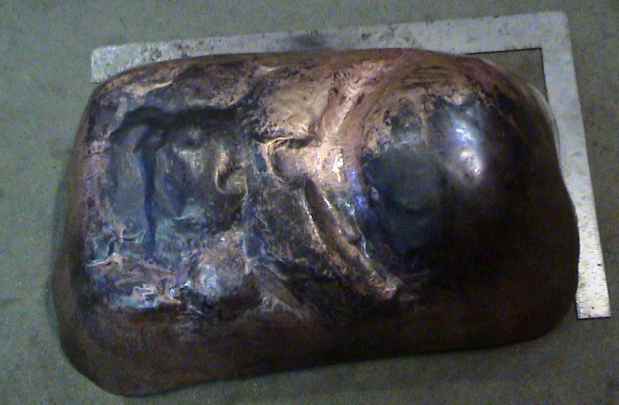
| Forming metal makes it stiff both from work hardening at a microcrystalline level and as uneven thickness and convoluted folds and structure on a slightly larger but still tiny scale. Planishing by hammering or rolling the surface smooth makes the material uniform and allows one to begin the next stage of forming with a pristine surface. The planish part went quickly in the early stages when the piece still fit into the English wheel (kind of a rolling mill in a C clamp) as the work progressed and the design became more complex it had to be hand hammered over stakes. | |
|
Annealing, relaxes pent up stresses and allows the material to move more freely. The copper is heated to a red heat and then quenched to cool and shatter off some of the oxides. The design is restated and reevaluated on the piece at each stage and forming begins again. Finally, the detail pieces, fork, knife, apple stem, cobra and beard were forged and attached; the piece cleaned, sandblasted, and patinated. |
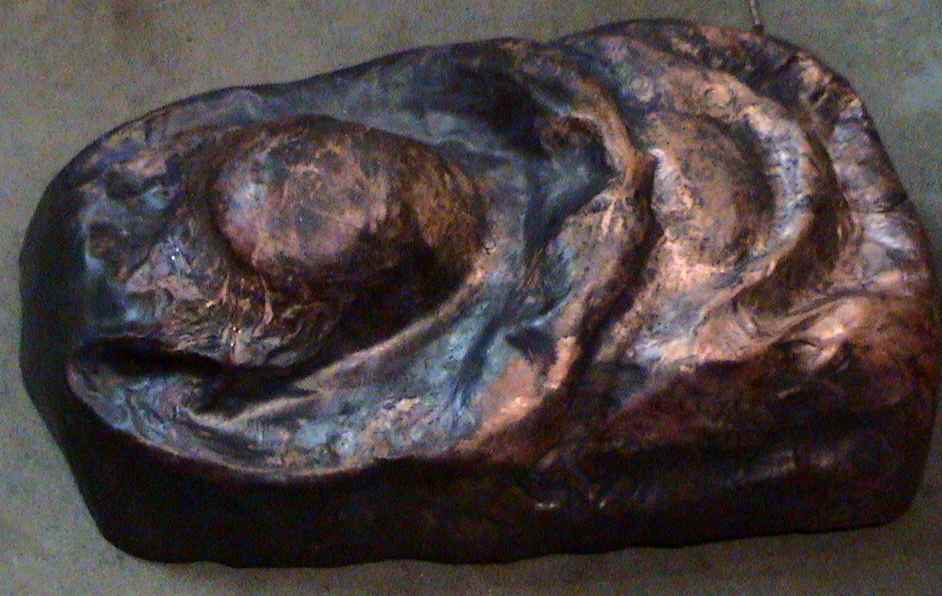
|
|

|
||


